How to Stain Concrete – How to Choose and Apply Concrete Stains
This post may contain affiliate links. We may earn a small commission from purchases made through them, at no additional cost to you. You help to support resin-expert.com
You might have different concrete surfaces in your home like a kitchen countertop, driveway, deck, or patio, and all of these surfaces need to be properly maintained. You can revive old floors or countertops, and the best and most inexpensive way to bring back the elegant vibrant rich color is to apply concrete stains.
Table of Contents
What is a Concrete Stain?
Staining concrete surfaces is an awesome way to revive the character of your concrete, giving it a glossy vibrant finish. It is very easy to confuse a concrete stain with paint as they both do the same job, which is bringing life and color to your concrete surface. Paint only covers the surface of your concrete but over a short time it will fade and peel off, whereas a concrete stain soaks into the concrete giving you vibrant color, and a beautiful look that is durable and will last for a long time.
On the market, there are three types of concrete stains available, each one is used on different kinds of concrete surfaces. You have solvent-based, acid-based, and water-based concrete stains but we will be going into more detail on the water and acid-based types in this article.
Solvent-Based Concrete Stain
This type of stain is used to tint the coating on your concrete, but you need to ensure that it is compatible with your concrete coatings’ chemical formulation. This type of stain dries fairly quickly and is more suitable for use indoors. However, if you use it outdoors, it will not last as the stain adheres to the coating and not to the concrete. So, when the coating wears away, the stain will too unless you use a solvent-based sealer, which will protect the concrete surface for longer.
Acid-Based vs Water Based Concrete Stain
If you have decided to use a concrete stain on your garage floor, deck, countertop, or any other concrete surface, you have two options to choose from and they are a water based concrete stain or an acid-based stain. Let us first have a look at some differences between these two stains, which will make it easier for you to choose what stain is more suitable for your project.
Water-Based vs Acid-Based Concrete Stain
| Water-Based Stain | Acid-Based Stain |
| Has low VOC’s (Volatile Organic Compounds) | Has high VOC’s (Volatile Organic Compounds) |
| Needs to be recoated frequently | Lasts a long time before needing to be recoated |
| Not able to penetrate the concrete but acts more like a paint bonding on the top surface | Able to penetrate the concrete giving it more durability to last for much longer |
| Comes in a variety of different colors | Limited to earth-tone colors |
| Requires a sealing coat to withstand outdoor weather conditions | Can withstand outdoor weather conditions without a sealing coat |
| Fairly reasonably priced | Can be rather expensive |
| Only applies a thin, transparent layer on the concrete surface | Creates a permanent hard shell on the concretes surface |
| Dries very quickly | Takes much longer to dry |
| Preferably used on fairly new and smooth concrete surfaces | Can be applied to old or rough concrete surfaces with excellent results |
From the chart above, it seems like the acid stain concrete stain is a better option for outdoor surfaces. However, manufacturers are always developing new products and the concrete stain sector is no exception. For example, Legacy Industrial has come up with a new product called Delta Dye Water-Based Penetrating Concrete Stain. Why use water-based instead of acid stain concrete?
The DeltaDye Stain is a penetrating stain that soaks into the pores of the concrete, giving you a permanent stain with a hard surface. It is also available in 24 vibrant concrete stain colors providing you with a beautiful durable concrete surface. It is also UV resistant that will not fade over time and has no toxic fumes, is eco-friendly, and safe to use. This product is only available directly from the manufacturers at the moment.
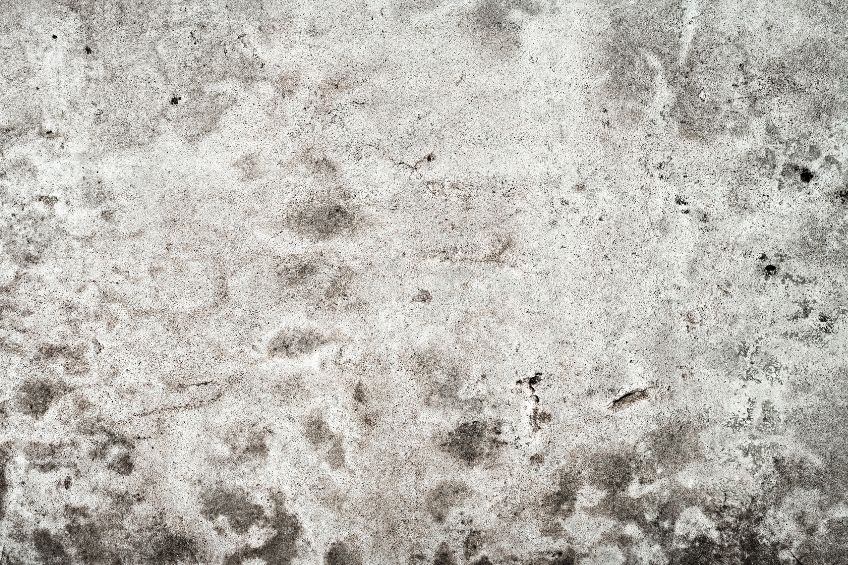
How to Stain Concrete Surface?
Like any other surface application, you need to make sure the concrete surface is thoroughly clean and free from any oil, paint, wax, dirt, coating, or any type of substance that will prevent the concrete stain from penetrating before you apply the stain. If you need to repair any damaged section, then now is the time to do it. Make sure you use a cement-based product as epoxy, resin, or polyurethane-based products will hinder the stain from penetrating the concrete. Let us move on and discover how to stain concrete.
Preparing the Concrete Surface
This is a vital part of the process, as you need to remove any foreign substances from the concrete surface to make it perfectly clean, or else you could end up with a final color that is not what you wanted, or the stain will not penetrate properly. Here are some of the scenarios that you may be faced with at this stage.
The Concrete has a Sealing Coat
You will have to remove the sealing coat before you can apply the new stain. Pour some Xylene (also referred to as Xylol or Touline) over the concrete surface and allow it to sit for around 30 seconds. Next, take a hard brush to scrub it off. Take a painter’s shield and scrape the residue into a heap and remove it from the concrete surface completely. If necessary, repeat this process. Now use a pressure sprayer to ensure the entire residue has been completely removed.
The Concrete has a Wax Coating
To remove the wax coating, you must apply floor wax remover to the concrete surface and allow it to sit for a short time, and then scrub it off with a soft bristle brush. Mop up the softened wax until the surface is completely clean. If there is both a sealant as well as a wax coating, there is no need to strip the wax off first as the Xylene will remove them both simultaneously.

The Concrete has a Coating of Glue, Paint, or any Type of Sticky Substance
To remove these types of substances from your concrete surface, you need to use a heavy-duty glue remover or paint stripper. After the surface is clean, you need to sand it with a floor sander or buffing machine.
The Concrete has Oil or Grease on the Surface
You need to remove these stains using a degreaser, which will lift these stains out of the pores of the concrete, even if you are not sure if they are oil or grease stains. Apply the degreaser and leave for about five minutes for small stains, but around 30 minutes for more heavy or stubborn stains. Now take a stiff straw brush and scrub the surface. You can now wash the surface off using some T.S.P (Trisodium Phosphate) and rinse well with clean water. Allow to dry out completely before commencing with the application of the stain.
Water Test for Penetration
If you are unsure if the concrete surface will be able to absorb the stain, a simple water test is prescribed. Pour some water over the concrete surface and if the water starts to soak in, then your concrete is ready for the stain. But if the water runs off the surface, you will have to start sanding, grinding, or etching the surface to remove any substance on the surface until the water can soak into the concrete.
Applying the Stain
Now the main part of the process begins, staining concrete. Before you do, you must take a few minutes to read and understand the manufacturer’s instructions first. Secondly, make sure you take the necessary precautions by wearing protective equipment, gloves, goggles, respiratory mask, and boots as the stain may contain acid.
When applying the stain, it is recommended that you use a sprayer that has a circular pattern, as it will give you a more even application. This is important, you will find the color becoming darker in certain areas where the stain is not evenly applied. If you are applying the stain to an old concrete surface, you need to order a little extra stain as the old concrete tends to soak up more of the stain. If you are applying the stain to a new concrete surface, you need to wait for 30 days to allow the new concrete to settle.
If you want a mottled effect, you need to apply one single coat of stain and cover the entire surface, then the effect will be evident as the degrees of porosity differ in the concrete. You can then also achieve different effects by applying more stains in irregular and random patterns. If you are going to use more than one color, it is better to start with the lighter colors first and then apply the darker colors. Before you apply a second coat of stain, you need to allow the stain to dry for around 30 minutes to one hour, only then can you apply extra coats.
Cleaning Up
After you have finished applying the stain you must wait until the stain has dried completely before you start to clean up. You must apply a neutralizer and a cleaner to ensure that you remove any harmful residue that remains. Rinse well and allow another two days for the surface to cure completely and allow all the fumes to evaporate.
Applying a Top Clear Sealing Coat
Not all stains need to have a clear sealing coat, but we do strongly recommend it as it not only protects the concrete stain but also enhances the colors. We do recommend that you use a water-based sealer and apply it as thin as possible using a roller working from top to bottom and then the second coat working from left to right. If you still notice spots on the surface that are dry, apply a further coat to make it smooth, be careful not to use too much sealer as it will result in a milky or cloudy finish.
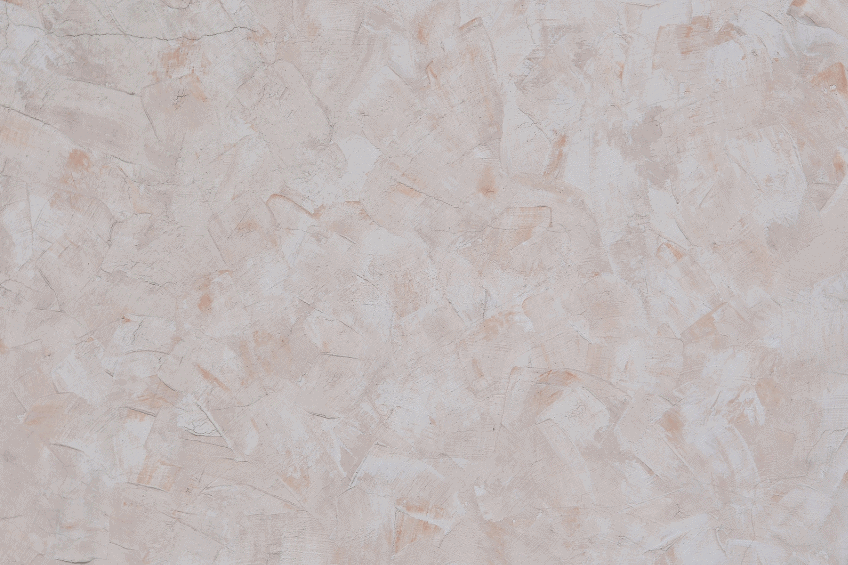
Some Tips for Staining Concrete
Finding the right concrete stain for you can be a difficult task but, in this article, we have tried to help you with your choice to make sure you buy a good quality product but also one that is reasonably priced. Now, maybe it is the first time you are applying a concrete floor stain, and you need a few pointers. Here are a few tips to help you out, happy staining!
- For concrete staining on a new concrete surface, you need to wait for 30 days for the concrete to cure, so it will be strong and be able to give you the colors you desire
- To make the color a darker shade, you can apply additional coats, but you need to wait for 24 hours before applying the next coat
- Do not be confused when you see the color in the bottle and it is not the same after you apply it. The color can be black in the bottle but white after application. This is because of the chemical reaction taking place on the concrete surface
- If you are looking for a color that is lighter than what you see in the bottle, just dilute it but make sure you first read the manufacturer’s instructions first
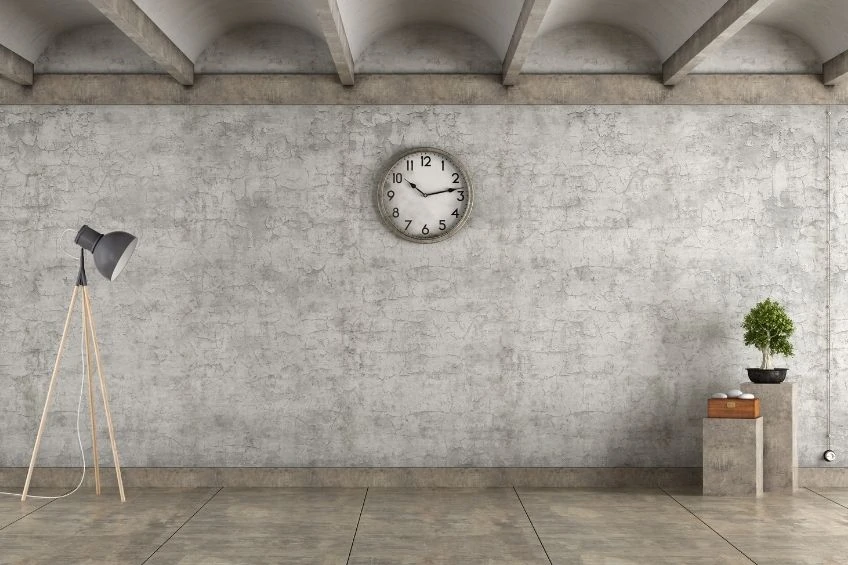
Benefits of Staining Concrete
To give your old concrete surface new life or to add extra color or vibrancy to your new concrete, then staining concrete is the way to go. Let us take a look at three of the main benefits of staining a concrete surface.
Durability or Long Life
This is a major advantage, as it will keep your concrete surface durable and fashionable even if it sees a lot of traffic and other types of wear and tear. The color will not fade, and the coating will not peel off or crack, giving you a beautiful surface for a long time.
Beautiful Appearance
By making use of all the available colors, you will have a floor that maximizes its beauty and gives you an elegant floor surface that matches your surrounding environment. There will be no need to add any extra surface protection, as the concrete stain will go deep into the surface for maximum protection.
Versatility
Concrete staining is very versatile, as you can use it on your pool deck, as a concrete floor stain for your garage floor, and even in your kitchen on your countertops. The best concrete stain will leave your surface with an elegant and fashionable look that will last for a long time.
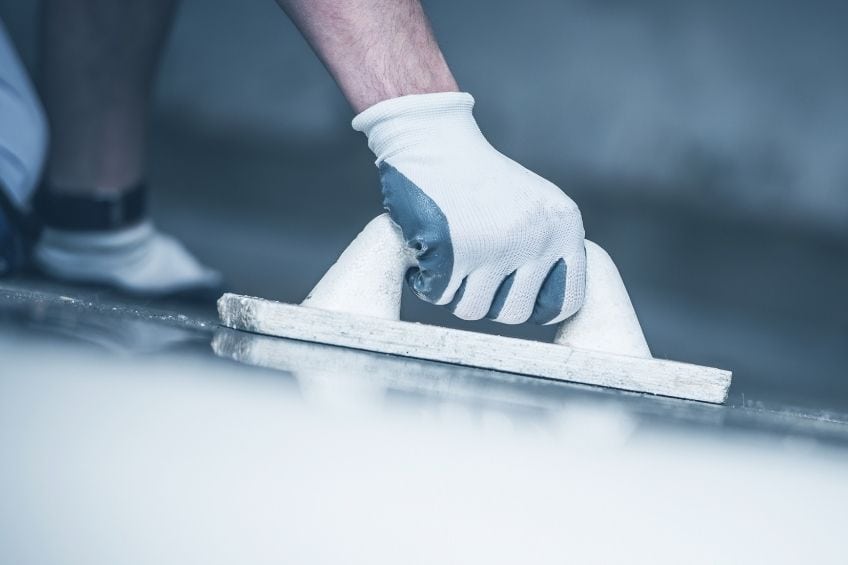
What to Consider When Buying Your Concrete Stain
Before you go ahead and buy your concrete stain, it is very important to consider certain aspects first, or you may find yourself with a product that does not work or is not suitable for your particular project. Here are some guidelines to help when going out to purchase your concrete stain.
Surface Coverage
Your first consideration is to make sure that it will cover the whole surface area. There is nothing more devastating than to find out the stain does not cover the whole surface area when you are nearly done. First, you need to measure the whole surface area and calculate it in square feet. Next, you need to read the manufactures instruction on the container very carefully and ensure that it covers the area you measured. There are plenty of good brands of concrete stain on the market, and you should have no difficulty finding one that meets your requirements.
Toxicity
Be careful when working with your stain as it may be toxic, especially when using an acid-based product. Due to its high VOCs (Volatile Organic Compounds), you need to be careful and avoid any accidents. You also need to make sure you wear protective equipment. Remember to store your stain that is leftover in a safe and cool place.
Composition
This might be the most important thing to consider, first establish how the stain will work on your particular surface and also how durable it will be. Both of these aspects depend largely on the type of formulation of the product. With acid-based stains you have a high VOC (Volatile Organic Compound) level, whereas water-based stains have a low VOC level, this is vital as you want to purchase a stain that does not pose a health risk.
Drying Time
This is an important aspect, as nobody wants to wait days before you can use your newly stained surface, so you need to choose a product that has the characteristic of a fast drying time. Some water-based concrete stains dry within 30 minutes after application.
Slip Resistant
You do not want to cause any unnecessary problems. So, if your completed stain looks glossy and wet, you need to ensure that it is not slippery, or you can be in for a nasty accident. You want your concrete floors to look nice, but you also need to be practical.
Bonding
You need to have a strong bond that creates strength with your stain, and deep penetration will provide this. The acid-based stain penetrates deeply, creating a reaction with the concrete. Your stained concrete floors will be stable and last for a long time.
Color
When improving the appearance of your wooden surfaces, a clear sealant is often chosen. However, when trying to improve the appearance of your concrete surface many users want to give it some color. If you are going to use an acid-based stain you are restricted to earth-tone colors, but water-based stains give you a whole spectrum of various vibrant concrete stain colors to choose from.
Thinning Requirement
Save time is always a bonus, so if a stain needs to be diluted before we can use it, it will cost extra time. Most of the acid-based stains can be used straight away without any dilution, but water-based stains usually need to be diluted first. Water-based stains require pigments or resins to be added before you can apply them to your concrete surface.
UV Protection
If you are going to use the concrete stain outdoors, then you need to consider if it is UV protective as it will be exposed to direct sunlight. The acid-based stains are suitable for this as they can withstand the UV rays without fading for long periods.
Surface Preparation
The surface preparation is also a vital aspect to consider before buying your concrete stain, as it will affect the bonding of the stain to the concrete surface. Water-based stains require more surface preparation than acid-based stains. Acid-based stains can be applied to a wet surface whereas water-based stains need a perfectly dry and clean surface before application.
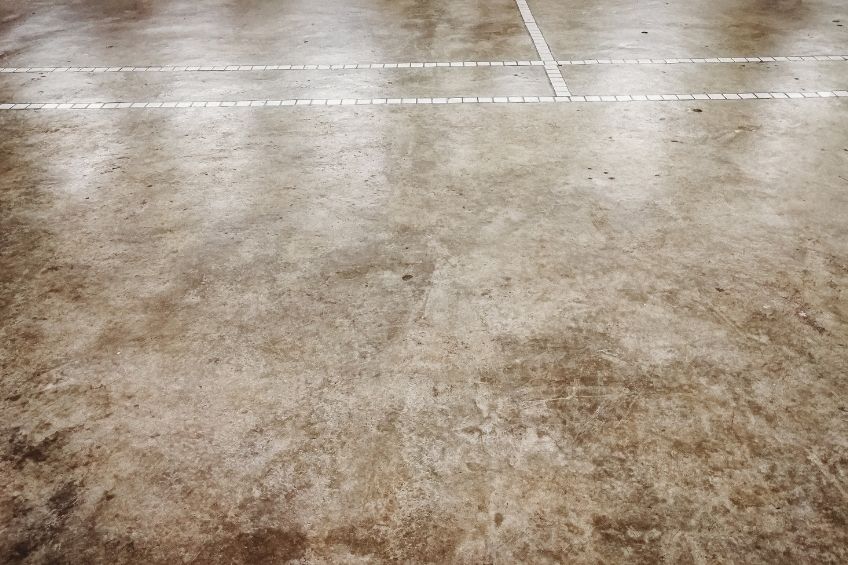
Frequently Asked Questions
How Much Stain Must I Buy?
This can depend on many factors, one being the state of your concrete. If it is old it may soak up more of the stain and you will use more. Generally speaking, one gallon covers around 150 to 350 square feet but read the label to make sure. If you want a darker stain, you will have to apply more coats and use more stain
What Stain is Best for Outdoors?
Since the surface is outside, it is subject to harsh weather conditions like UV light, extreme heat, or fierce storms. So the best stain to use will be an acid-based stain, as it can withstand all the weather conditions and is also water-proof.
Can You Stain New Concrete?
Yes, you can stain new concrete, but you need to wait for 30 days to allow the new concrete to cure properly, otherwise, you can end up with a devastating effect.
Can Concrete be Re-Stained?
Yes, but you will notice a different shade in the color of the re-stained surface because the stain does not reach every area. When you apply another coat over an already stained surface, the color will be darker and not the same as it would be if applied to bare concrete.
What is the Reason for My Staining Fading?
Usually, stains do not fade if you have used a quality stain, but if it is outside it could appear faded. However, it may just be normal wear and tear and all it needs is a resurfacing to make it brand new again.
How Long can Stained Concrete Floors Last?
There have been concrete stains that have lasted more than 100 years, but you need to wax them at least twice a year to make them last. When applied properly, concrete stain colors should not fade, crack, or peel for a very long time.
Concrete stains provide a completely unique look and feel to all kinds of concrete finishes. If you are planning on enhancing your concrete with a stain,then we hope to have provided plenty of inspiration in our guide above!

